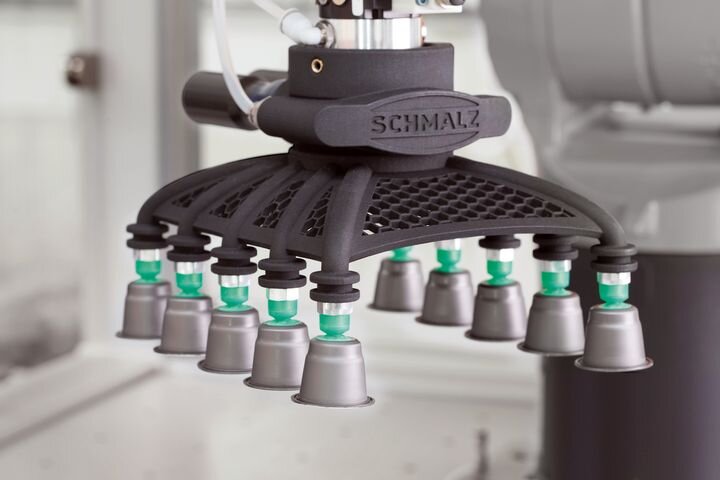![3D printed custom robotic grippers [Source: Trinckle]](https://fabbaloo.com/wp-content/uploads/2020/05/image-asset_img_5eb08d0884c9b.jpg)
I’m reading material from Trinckle about a new application they’ve deployed and realized it is an example of what every 3D printing company should be doing.
Trinckle is a Berlin-based company that occupies an interesting niche in the 3D printing space: customized designs. Ostensibly they are a 3D print service, but they also offer an unusual service they call “paramate”.
Trinckle’s Paramate
![Automatically generating 3D model for custom robotic grippers in Paramate [Source: Trinckle]](https://fabbaloo.com/wp-content/uploads/2020/05/image-asset_img_5eb08d08dca17.jpg)
Paramate is a system that can automate a design process, and result in a kind of product design that is customizable. That is to say, many types of products are essentially identical except for several known variations. There’s no point in redesigning an entire product if only a few things are to be changed.
That’s what paramate does: automate the process of tweaking an existing design. Of course, there is a bit of set up to get it configured, but once done it is relatively straightforward to quickly crank out new design variants.
Schmalz Robot Grippers
![3D printed robotic grippers in use [Source: Trinckle]](https://fabbaloo.com/wp-content/uploads/2020/05/image-asset_img_5eb08d09373ca.jpg)
Trinckle described one of the clients being J. Schmalz GmbH, the “market leader in vacuum gripping technology”. In other words, this company produces all types of grippers for robots, which need different “hands” for different jobs. It is a steady stream of requests for slightly different grippers, ideal for an automated customization solution.
Here’s the key part of their description of J. Schmalz GmbH’s usage of paramate:
“Based on its cloud technology paramate, trinckle developed a web application for Schmalz in which users can customize their vacuum gripper. This can be done in minutes and without required in-depth knowledge. This application is integrated into Schmalz’s website so that employees and customers worldwide can access it at any time.”
That’s great but what’s really happening here?
Simplified 3D Printing
The answer is simply this: they are making it easier to 3D print.
One of my personal axioms is that if you want something to happen, remove the barriers facing it. In the world of 3D printing, design is the key barrier. While 3D printers can produce just about anything, they can only do so when supplied with the desired design, or 3D model.
Think about it: a 3D printer can produce an infinite variety of designs, yet we have only a limited set of designs available and they are almost always not the right one for the job. Trinckle’s solution is a way of broadening the input to 3D printers, making it easier and more likely to happen.
They’ve intervened in the market with paramate to blow up some of those barriers, and increasing their business along the way. This is a strategy employed by very few other 3D printing companies.
3D Printing Software Ease of Use
One I can think of is Carbon, who developed an easy to use lattice generation tool they can offer to manufacturers who would otherwise be unable to build on their own. Carbon made it easier for their clients to produce designs and, by implication, print more on Carbon equipment.
Another company with this strategy might be Desktop Metal, who have been working on a system to automatically generate optimized 3D models by iterating through all the expected mechanical forces and developing a design solution. They’re trying to make it easier for their clients to create designs for 3D printing. On their equipment, of course.
These are all examples of a simple approach: make it easier for clients to use your product. It’s an old strategy, and one often misapplied in the 3D printing space, where attention is focused on making the machine itself easy to use, whereas the larger problem is that clients don’t have the right design to 3D print.
Via Trinckle

